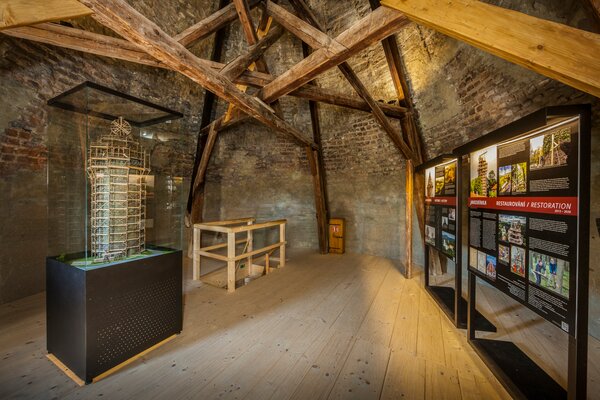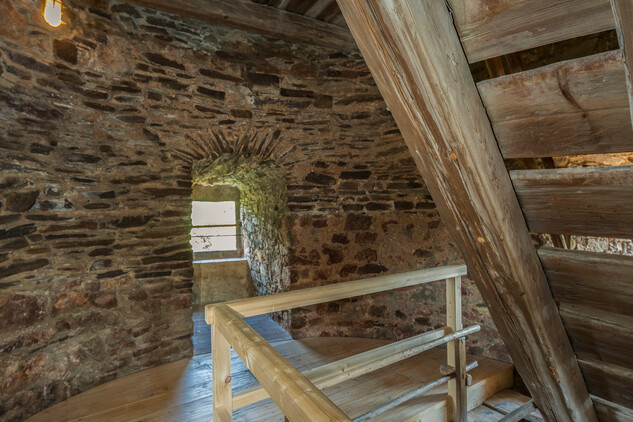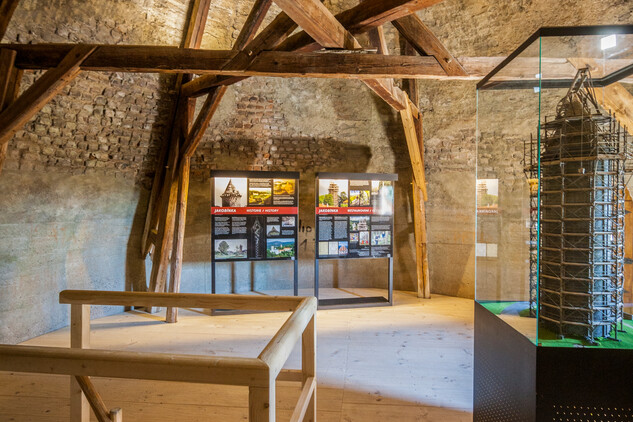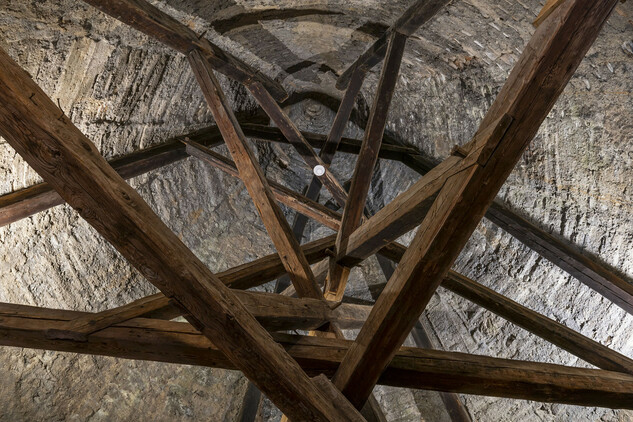The 5th floor
To the 5th floor leads 169 stairs. Here is possible see the uniquely preserved wooden beam structure from 1523 in the form of a saltire, which served as a support in the construction of a brick-walled helmet. That it has been preserved is very rare, because mostly these structures were removed immediately after construction. On the inner shell of the helmetare are evident the prints in grout made by the board formwork. The age of the internal wooden structure is confirmed, but it does not necessarily mean that this is a clear proof of the age of the tower. It cannot be ruled out that the helmet could have replaced an older combustible wooden roof that was destroyed by a fire. The helmet, as well as the space of this floor, was reinforced with concrete in 1934, which is also confirmed by the preserved plaque.
There are two panels dedicated to the history of the tower and its repairs, including the last and most fundamental. The model of the tower shows how it was repaired. Its extensive repairs took place between 2013 and 2019, under the leadership of the National Heritage Institute. This was carried out using both historical building and craftsmanship procedures to verify these methods in practice. They used hand-felled and processed wood from nearby forests. A demanding design of spiral scaffolding was created, which in length of more than 400 metres wrapped around the tower. The top of the tower was used for placing a copy of a unique rotating crane, which was 14 metres long and 7 metres high and served to transport construction parts and materials. The wheel was inspired by a sketch preserved in the so-called Codex Atlanticus by Leonardo da Vinci. In the year 1472, as an apprentice on the construction of the florentine temple of Santa Maria del Fiore, da Vinci got acquainted with the machinery used in the construction of the unique dome by the builder Fillipo Brunelleschi.

Quick contact
Are you lost? Don't worry, give us a call and we will help you.






